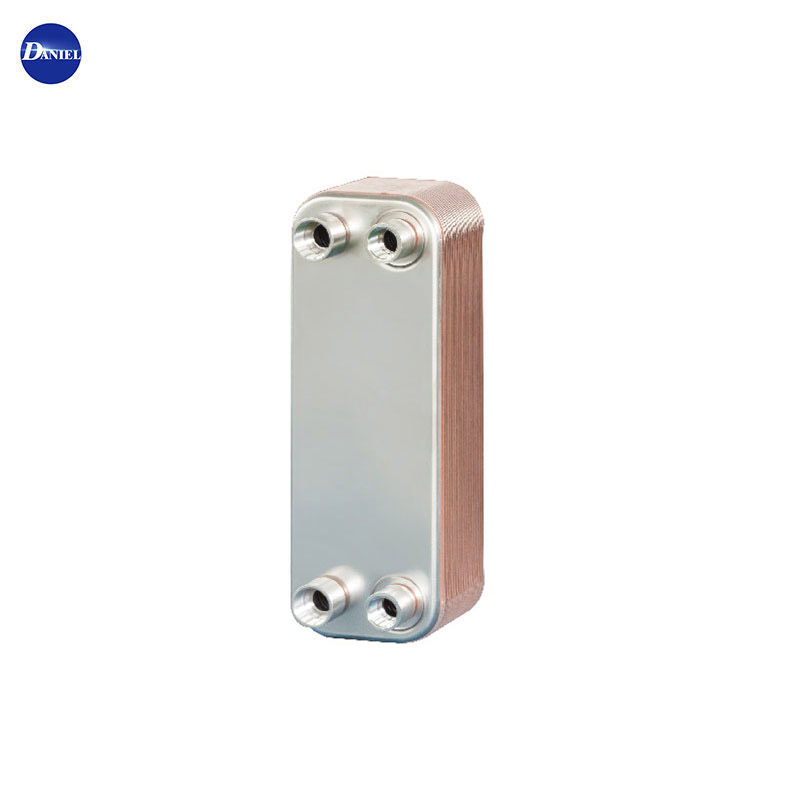
 English
English  Español
Español Português
Português русский
русский Français
Français 日本語
日本語 Deutsch
Deutsch tiếng Việt
tiếng Việt Italiano
Italiano Nederlands
Nederlands ภาษาไทย
ภาษาไทย Polski
Polski 한국어
한국어 Svenska
Svenska magyar
magyar Malay
Malay বাংলা ভাষার
বাংলা ভাষার Dansk
Dansk Suomi
Suomi हिन्दी
हिन्दी Pilipino
Pilipino Türkçe
Türkçe Gaeilge
Gaeilge العربية
العربية Indonesia
Indonesia Norsk
Norsk تمل
تمل český
český ελληνικά
ελληνικά український
український Javanese
Javanese فارسی
فارسی தமிழ்
தமிழ் తెలుగు
తెలుగు नेपाली
नेपाली Burmese
Burmese български
български ລາວ
ລາວ Latine
Latine Қазақша
Қазақша Euskal
Euskal Azərbaycan
Azərbaycan Slovenský jazyk
Slovenský jazyk Македонски
Македонски Lietuvos
Lietuvos Eesti Keel
Eesti Keel Română
Română Slovenski
Slovenski मराठी
मराठी Srpski језик
Srpski језик
Common Types of Brazed Plate Heat Exchangers
2021-11-15
Common types of brazed plate heat exchangers
The brazed plate heat exchanger is a new type of heat exchanger made up of a series of corrugated metal sheets. A thin rectangular channel is formed between each plate, and heat exchange is carried out through the half plate. Compared with conventional shell-and-tube heat exchangers, its heat transfer coefficient is much higher under the same flow resistance and pump power consumption, and it has a tendency to replace shell-and-tube heat exchangers within the applicable range.
A partition type heat exchanger with a heat transfer surface composed of plates. This type of heat exchanger has a compact structure and a large heat transfer area per unit volume. The main types are:
(1) The spiral plate heat exchanger is made of two parallel metal plates with a certain distance between them. The cold and hot fluids flow in the spiral channels on both sides of the metal plates. This kind of heat exchanger has high heat transfer coefficient, large average temperature difference, low flow resistance, and is not easy to scale; but it is difficult to maintain, and the use pressure is not more than 2MPa.
(2) The flat plate heat exchanger is assembled by alternately overlapping corrugated sheets and sealing gaskets of some shapes, and clamping them with a frame. The cold and hot fluids respectively flow through the flow channels on both sides of the corrugated plate, and exchange heat through the plates. Corrugated plates are usually punched from stainless steel, aluminum, titanium, molybdenum and other thin plates with a thickness of 0.5 to 3 mm. The advantage of the flat plate heat exchanger is that the heat transfer coefficient is high, it is easy to disassemble and wash, and the plates can be added or removed to adjust the heat transfer area. The operating pressure is usually not more than 2MPa, and the operating temperature is not more than 250°C.
(3) The plate-fin heat exchanger is composed of a heat exchange plate bundle enclosed in a collecting box with cold and hot fluid inlets and outlets. The plate bundle is formed by alternately overlapping flat plates and corrugated fins, and brazing and fixing them. The cold and hot fluids flow through the two sides of the plate to exchange heat. The fins increase the heat transfer area, increase the turbulence of the fluid, and enhance the equipment. The plate-fin heat exchanger has a very compact structure, a good heat transfer effect, and the working pressure can reach 15MPa. However, its manufacturing process is complex, the flow channel is small, and the internal leakage is not easy to repair, so it is limited to clean non-corrosive fluids, such as heat exchangers for air separation.

The brazed plate heat exchanger is a new type of heat exchanger made up of a series of corrugated metal sheets. A thin rectangular channel is formed between each plate, and heat exchange is carried out through the half plate. Compared with conventional shell-and-tube heat exchangers, its heat transfer coefficient is much higher under the same flow resistance and pump power consumption, and it has a tendency to replace shell-and-tube heat exchangers within the applicable range.
A partition type heat exchanger with a heat transfer surface composed of plates. This type of heat exchanger has a compact structure and a large heat transfer area per unit volume. The main types are:
(1) The spiral plate heat exchanger is made of two parallel metal plates with a certain distance between them. The cold and hot fluids flow in the spiral channels on both sides of the metal plates. This kind of heat exchanger has high heat transfer coefficient, large average temperature difference, low flow resistance, and is not easy to scale; but it is difficult to maintain, and the use pressure is not more than 2MPa.
(2) The flat plate heat exchanger is assembled by alternately overlapping corrugated sheets and sealing gaskets of some shapes, and clamping them with a frame. The cold and hot fluids respectively flow through the flow channels on both sides of the corrugated plate, and exchange heat through the plates. Corrugated plates are usually punched from stainless steel, aluminum, titanium, molybdenum and other thin plates with a thickness of 0.5 to 3 mm. The advantage of the flat plate heat exchanger is that the heat transfer coefficient is high, it is easy to disassemble and wash, and the plates can be added or removed to adjust the heat transfer area. The operating pressure is usually not more than 2MPa, and the operating temperature is not more than 250°C.
(3) The plate-fin heat exchanger is composed of a heat exchange plate bundle enclosed in a collecting box with cold and hot fluid inlets and outlets. The plate bundle is formed by alternately overlapping flat plates and corrugated fins, and brazing and fixing them. The cold and hot fluids flow through the two sides of the plate to exchange heat. The fins increase the heat transfer area, increase the turbulence of the fluid, and enhance the equipment. The plate-fin heat exchanger has a very compact structure, a good heat transfer effect, and the working pressure can reach 15MPa. However, its manufacturing process is complex, the flow channel is small, and the internal leakage is not easy to repair, so it is limited to clean non-corrosive fluids, such as heat exchangers for air separation.

X
We use cookies to offer you a better browsing experience, analyze site traffic and personalize content. By using this site, you agree to our use of cookies.
Privacy Policy





